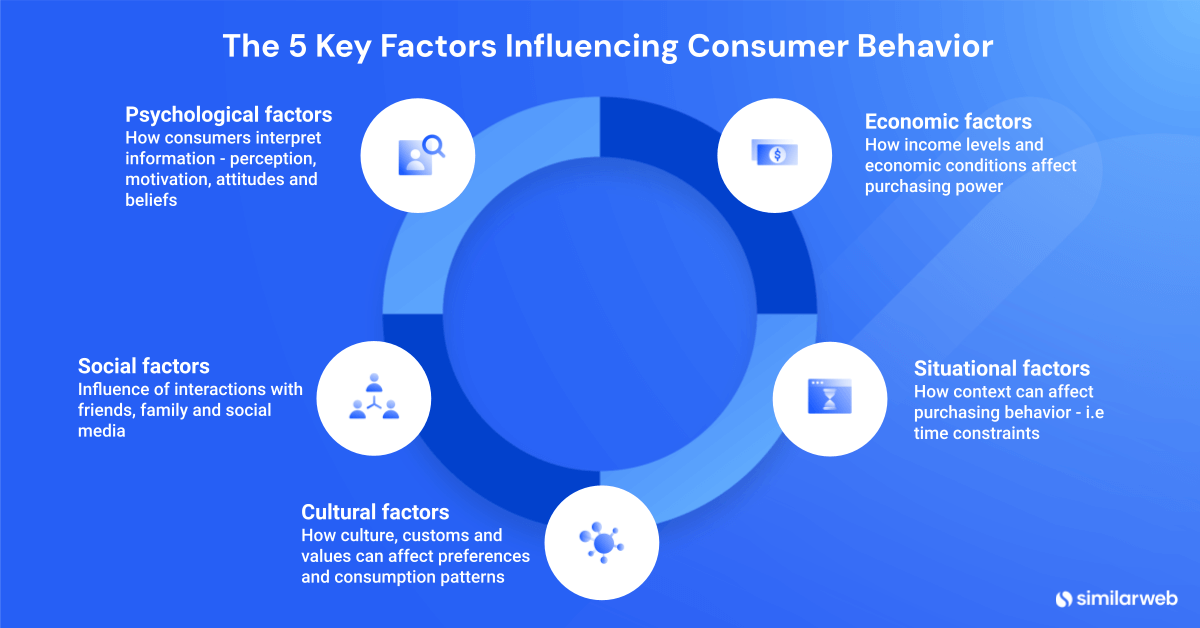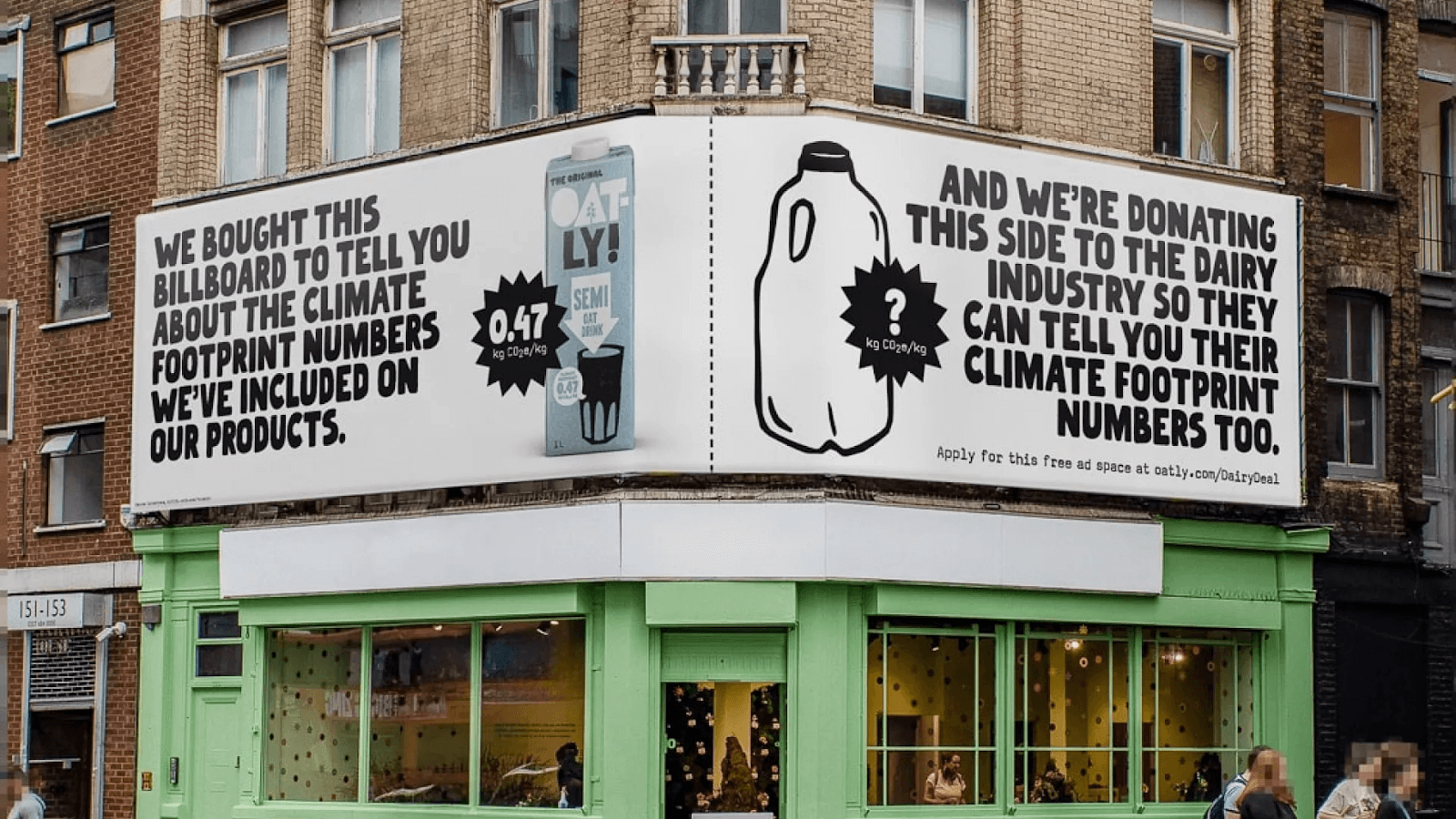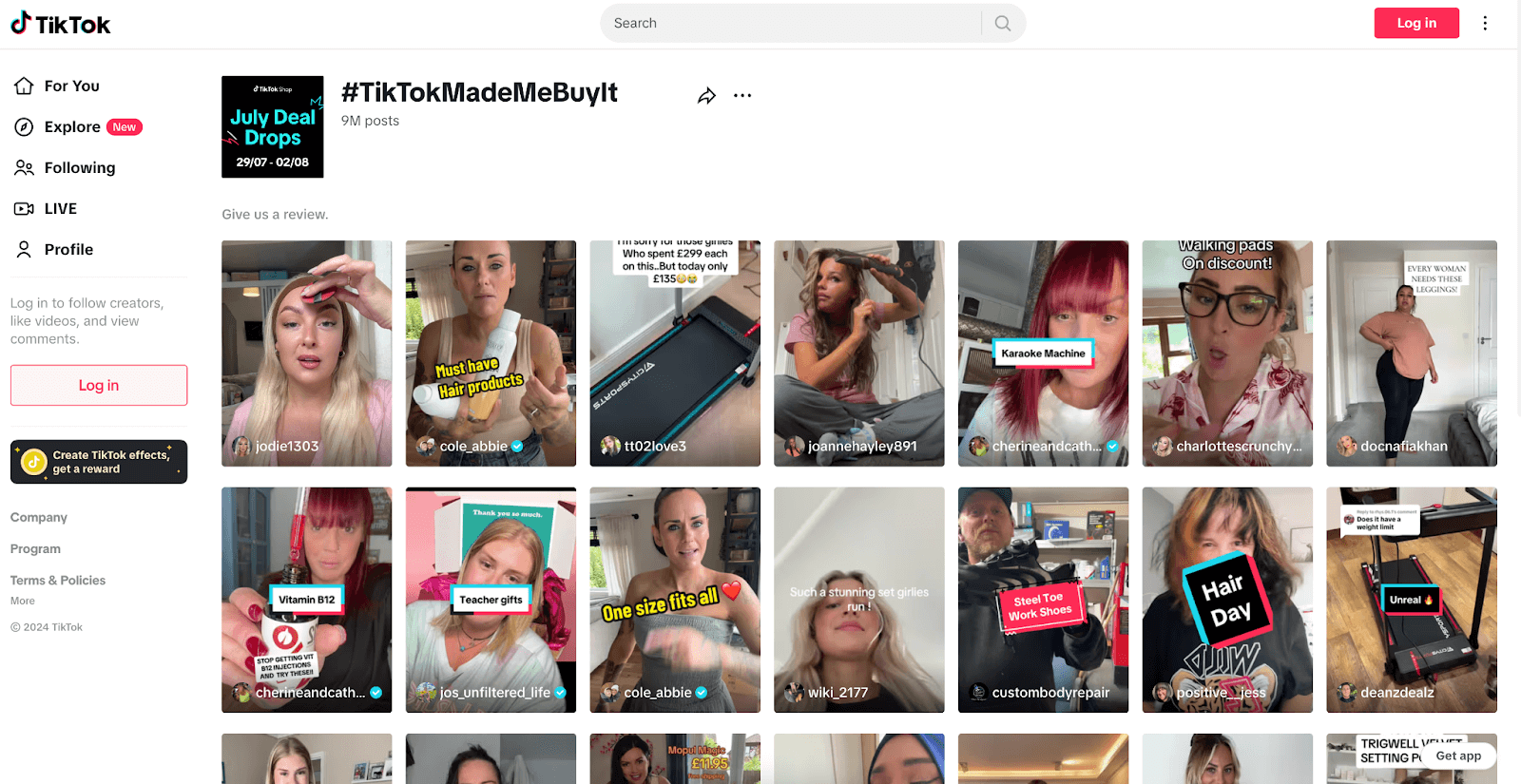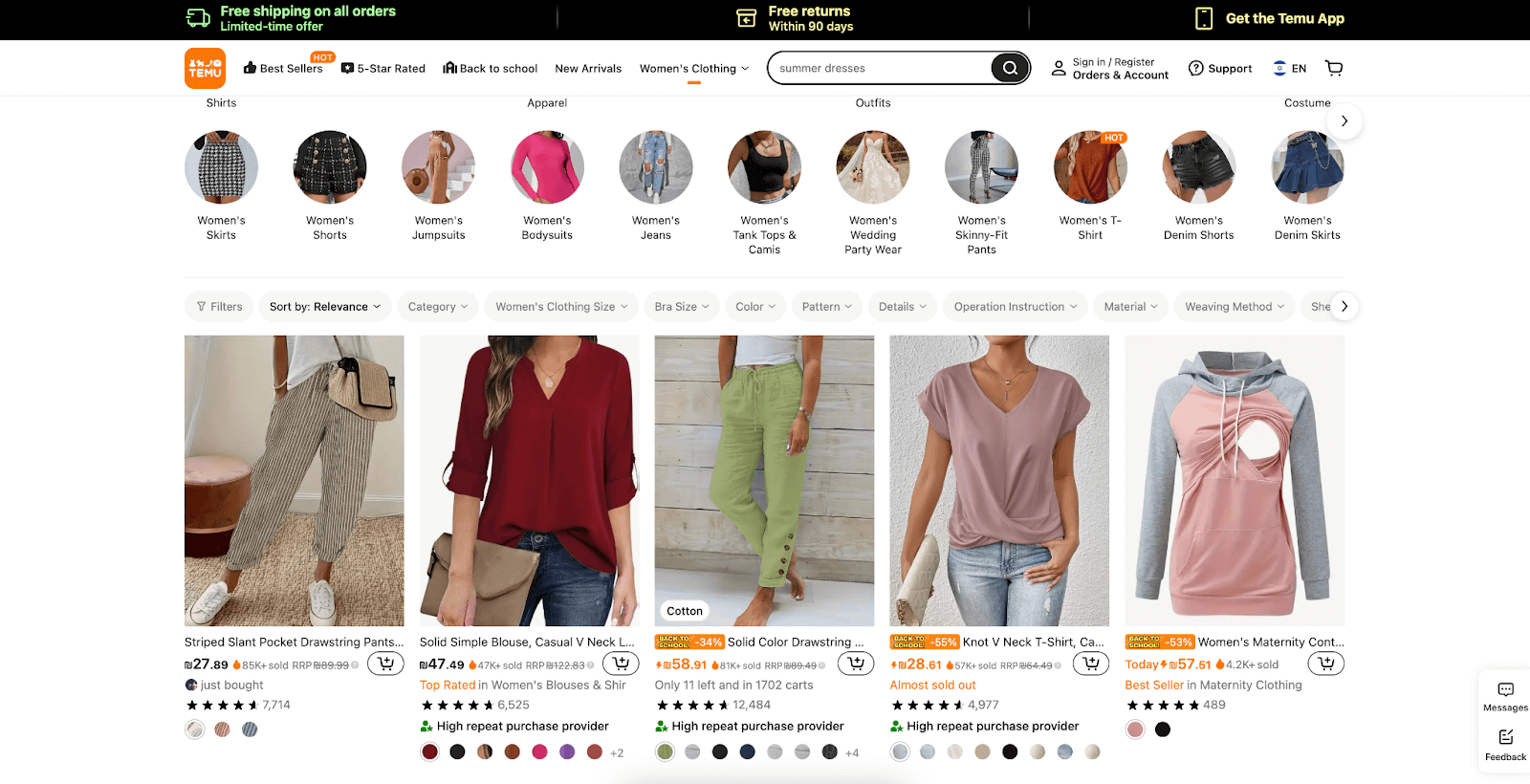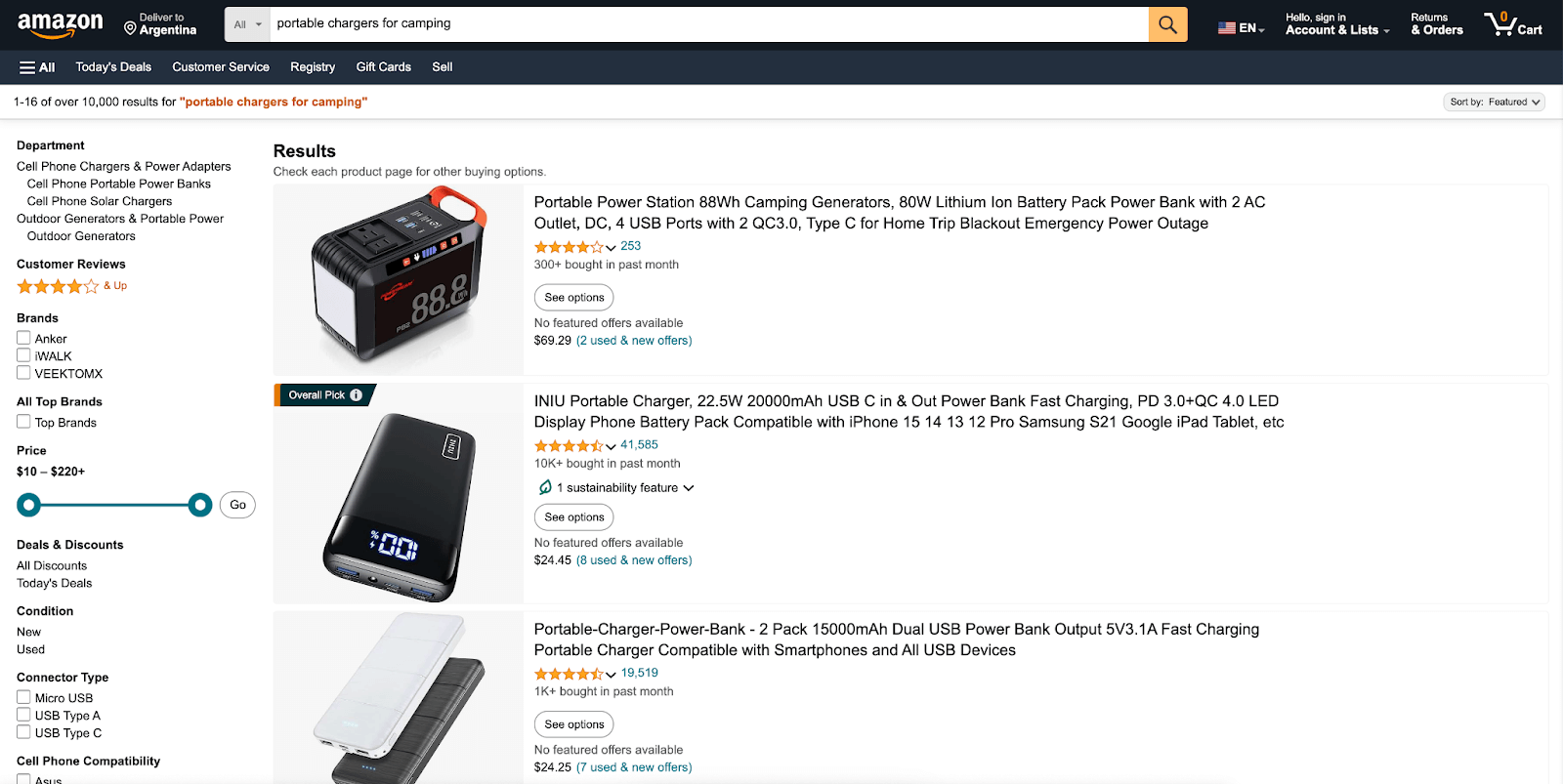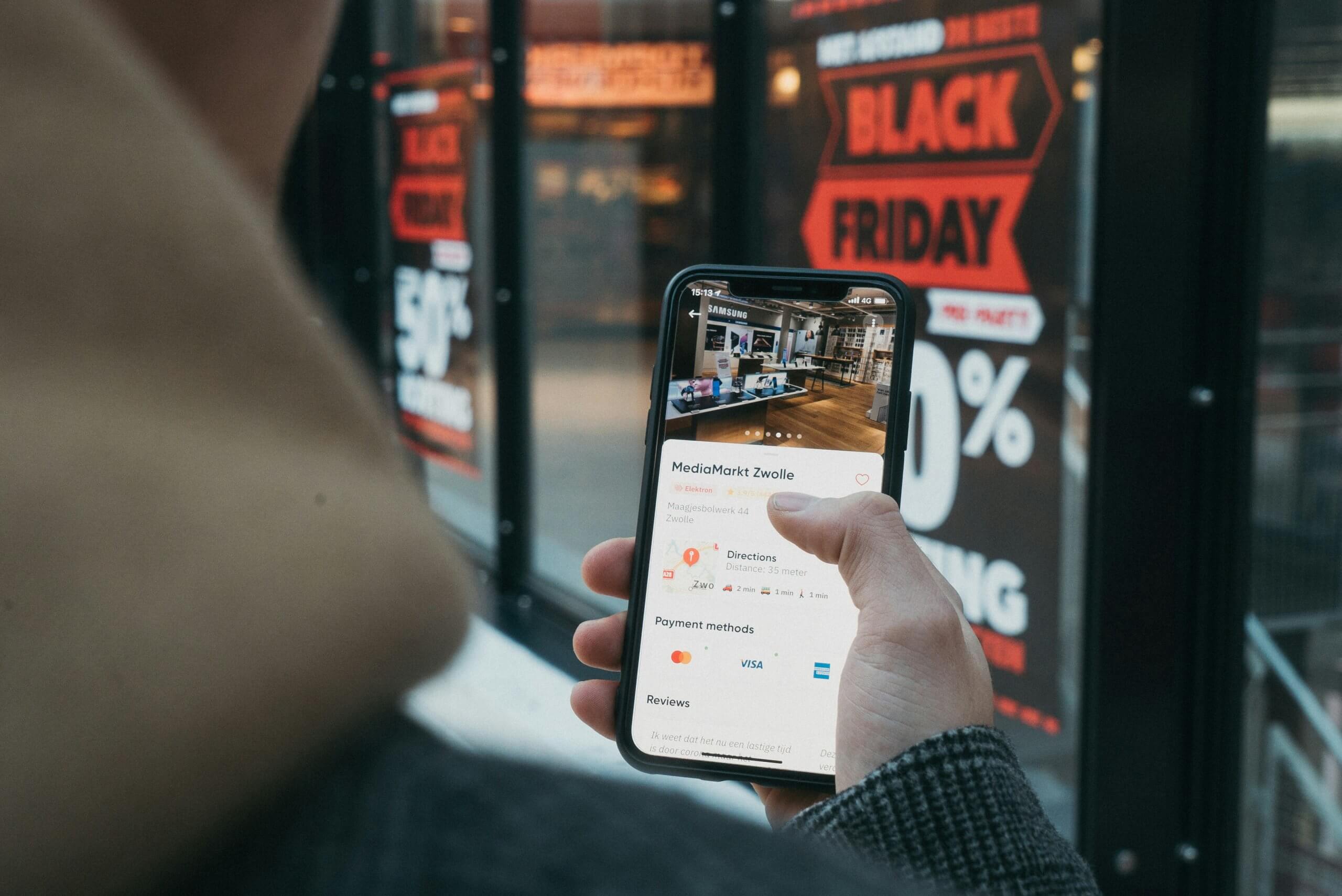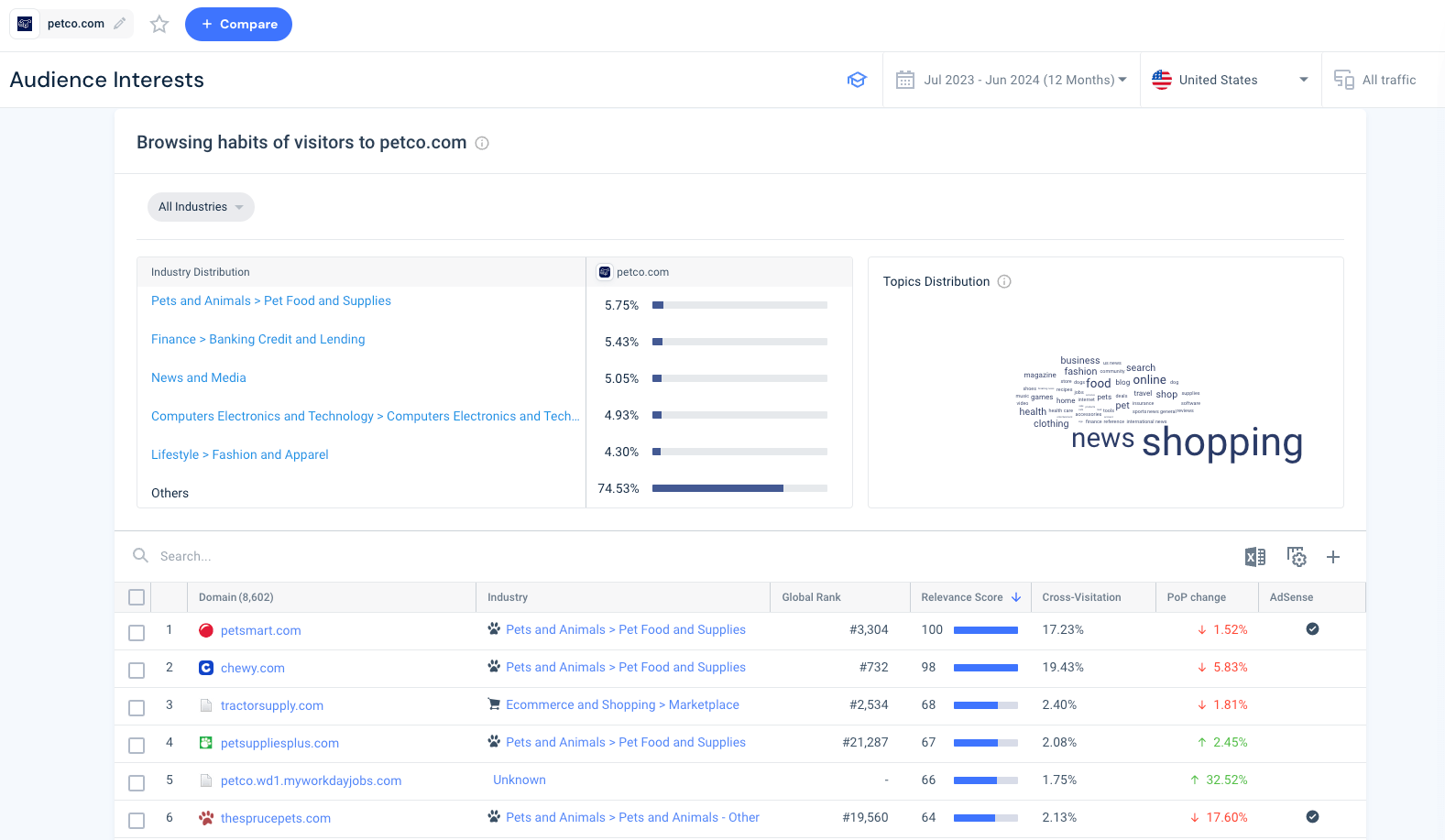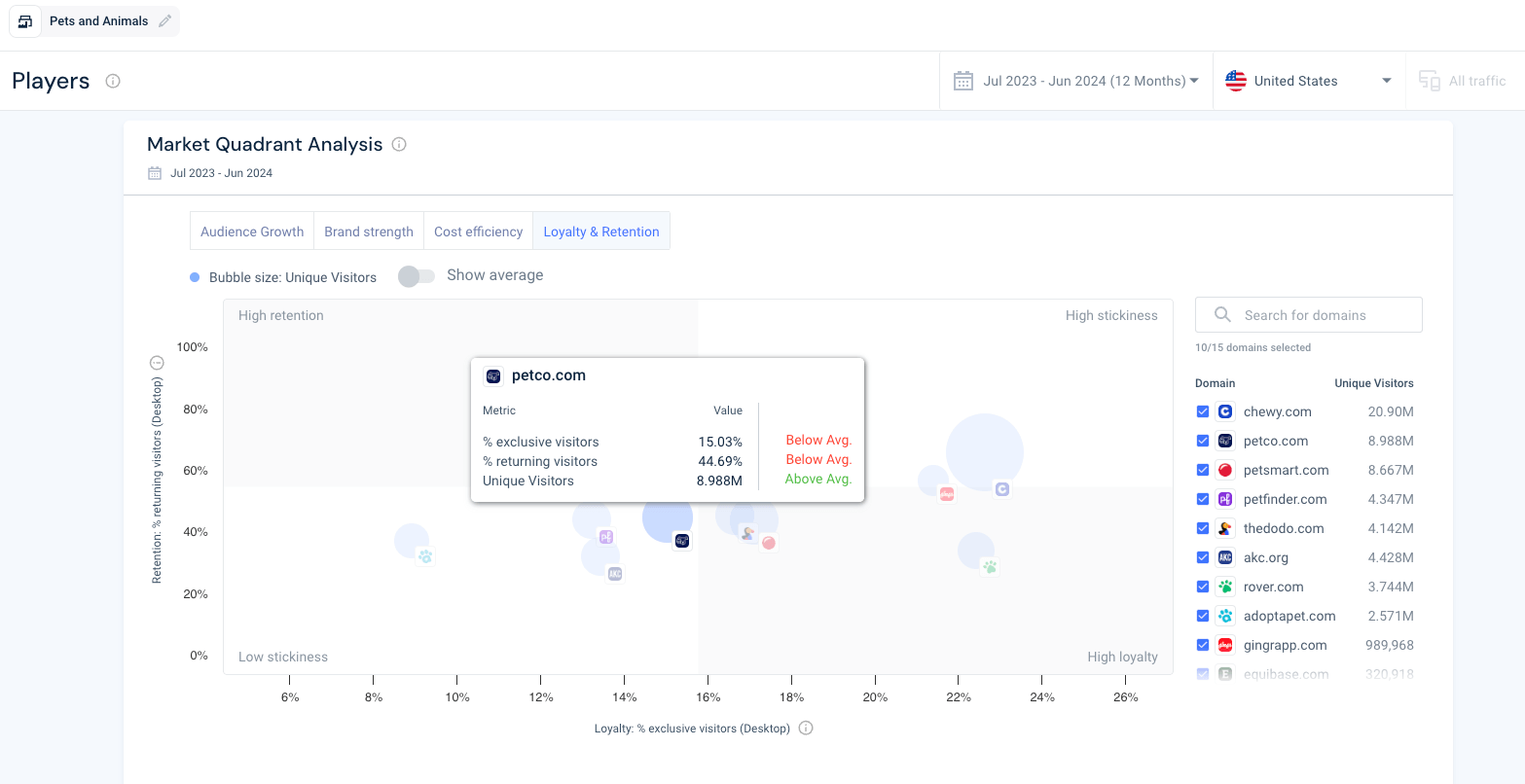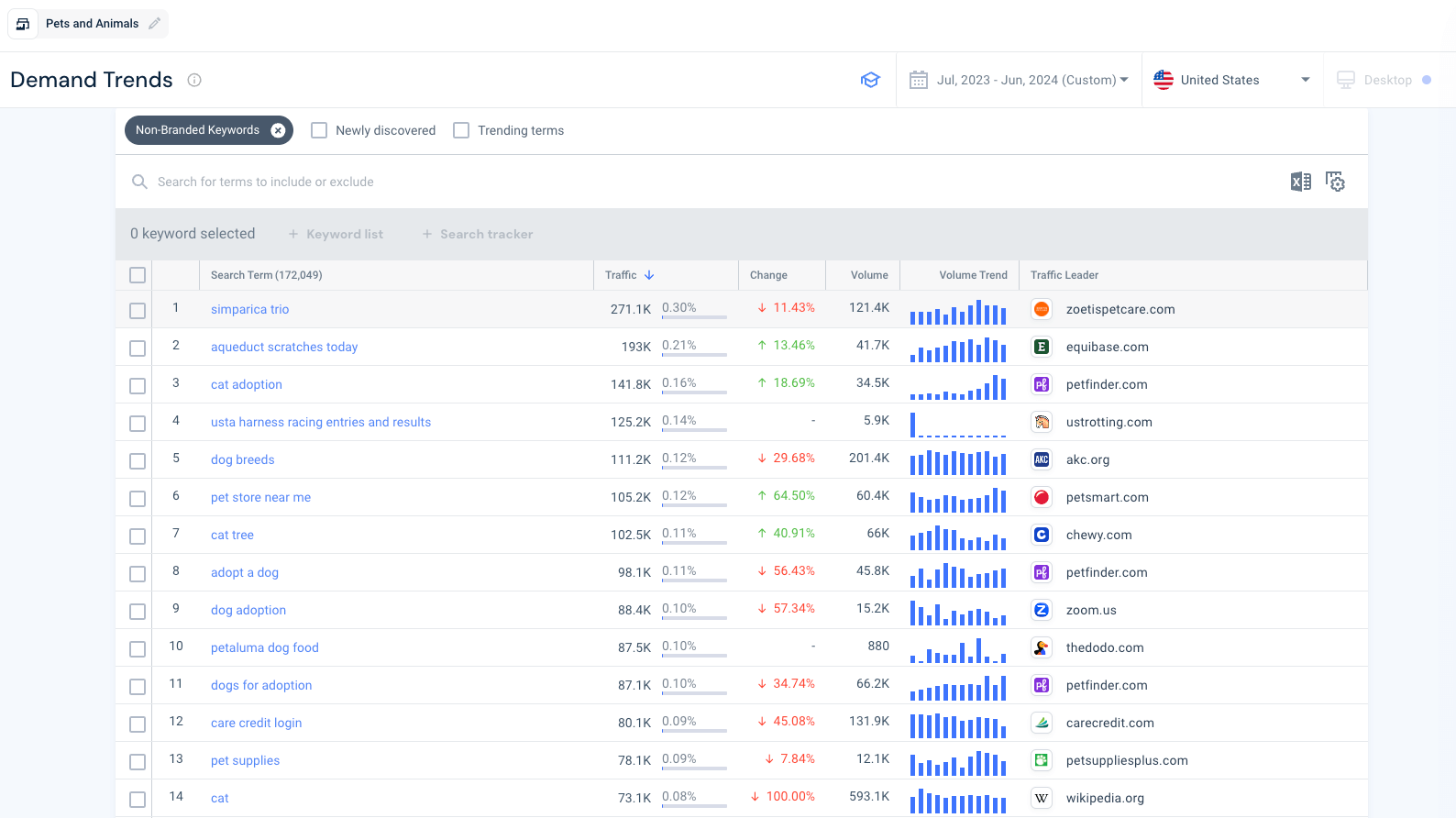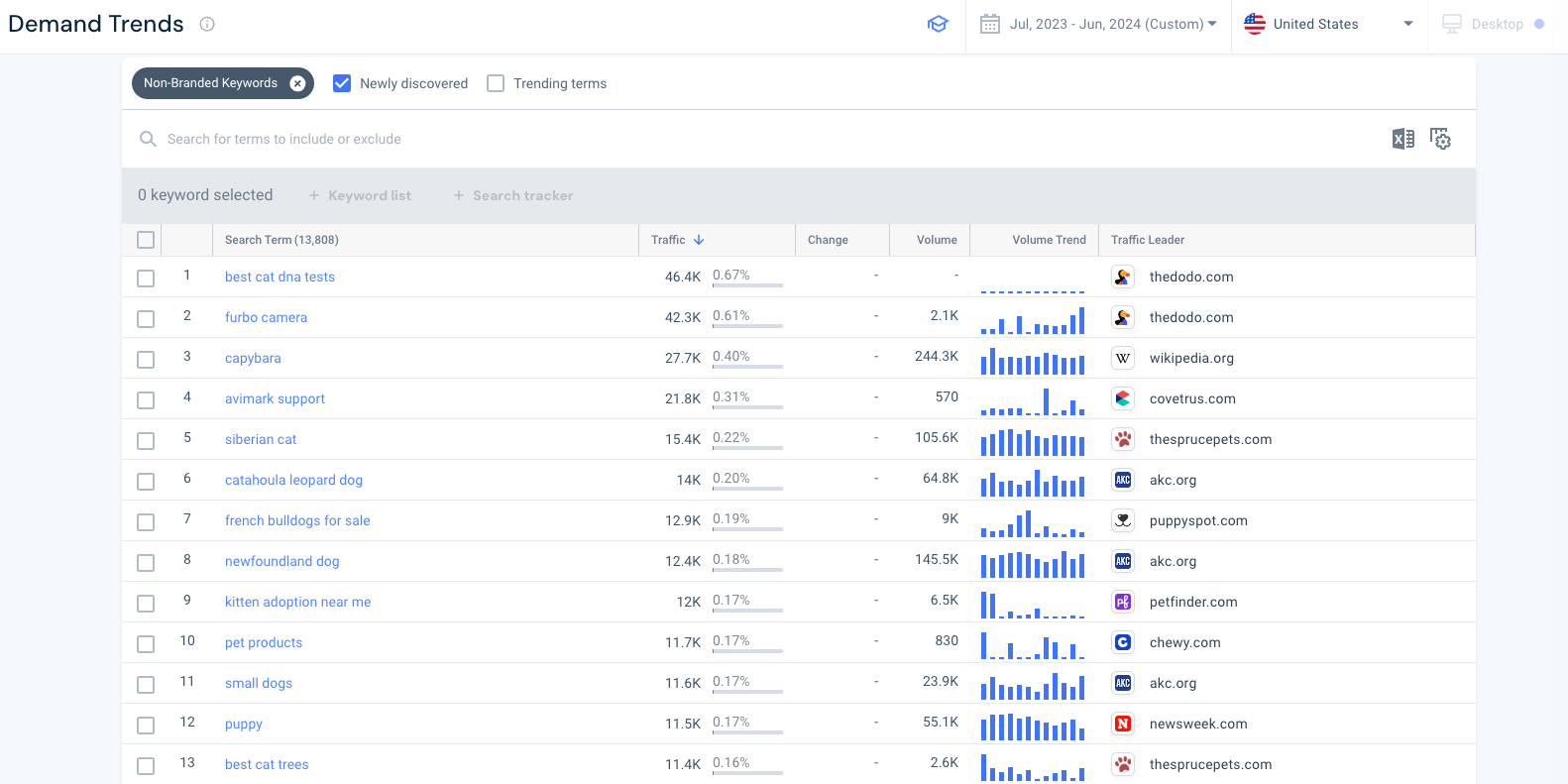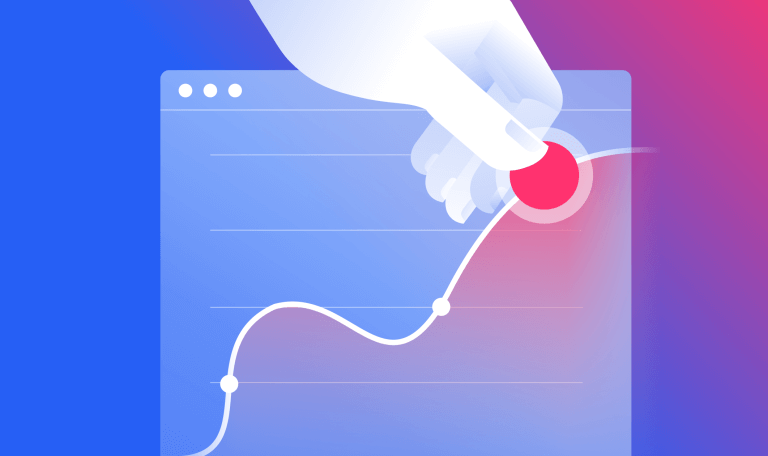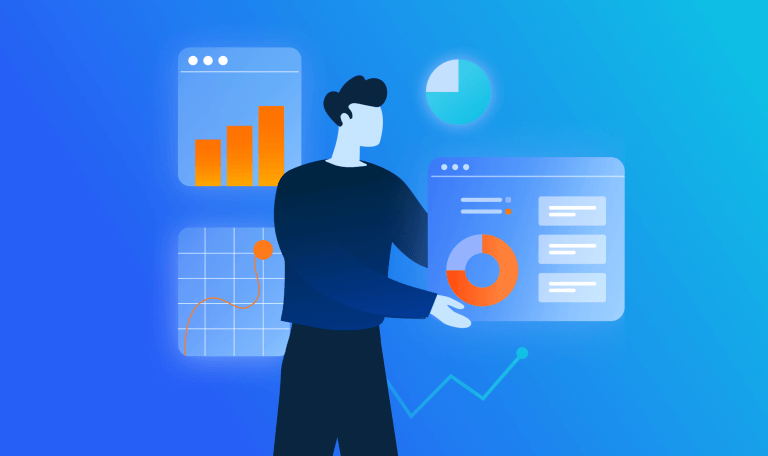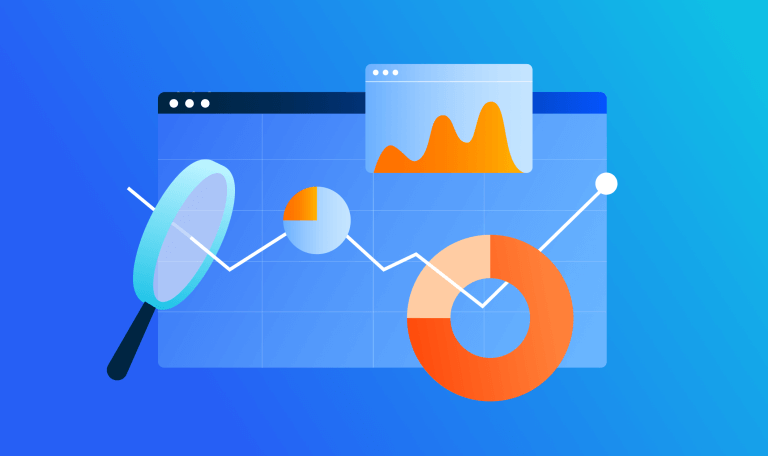Unlocking Consumer Behavior: What Makes Your Customers Tick?

Ever wondered why you make certain shopping choices or what causes you to click on a particular ad? It’s these types of purchasing behaviors that businesses are eager to uncover and understand.
Why? Because cracking the code of consumers’ preferences, online habits, and purchasing decisions helps companies tailor their products and marketing strategies to better meet customer needs.
But in a fast-paced digital world where trends change in the blink of an eye, understanding modern consumer behavior has never been more important – or more challenging!
Here, we’ll explore what consumer behavior really means, why it’s so important, what influences it and then showcase some helpful market research tools that can uncover what makes your customers tick.
Ready to dive in? Let’s go!
What is consumer behavior?
Consumer behavior is the study of how people select, purchase, and use products and services to satisfy their needs and desires.
It’s a multidisciplinary field that delves into the various factors influencing how and why people make purchasing decisions. It includes the psychological processes, social dynamics and cultural influences that drive consumer actions.
By examining these elements, businesses can tap into what motivates customers, how they perceive products, and the decision-making processes they follow.
Why is understanding consumer behavior so important?
Consumer behavior isn’t just a fancy term tossed around in marketing meetings – getting to grips with it can be a total game-changer for your business, whether big or small. So, let’s see why it’s so important and how it can lead to more strategic analysis:
1) Tailored marketing strategies
Imagine trying to sell a winter coat to someone living in a tropical paradise. Without understanding consumer behavior, you’re at risk of making these sort of poor, uninformed decisions.
By knowing your target audience’s preferences, habits, and needs, you can create marketing strategies that are more likely to resonate directly with them. When you know what makes your customers tick, you can hit all the right notes in your campaigns. This means more effective advertising, higher engagement, and better ROI 🤑
2) Enhanced product development
Ever wonder why some products become an instant hit while others just flop?
Often the difference between sinking or swimming lies in decoding consumer behavior. By tapping into the wants and needs of your target market, you can innovate and develop products that are almost guaranteed to succeed with your target audience. This is especially important when targeting a niche market.
Consumer insights can lead to breakthrough ideas and improved product features that your customers didn’t even know they needed but soon won’t be able to live without! When done right, you are able to understand How to Achieve Strategic Success Through Competitive Product Analysis.
3) Improved customer experience
Remember: a happy customer = a loyal customer.
Understanding consumer behavior makes it much easier to create a seamless and enjoyable customer experience – from start to finish. From intuitive website design to personalized customer service, knowing what your customers value ensures you can keep them happy and on-site. This is likely to help you stand out against competitors, as well as help to build strong relationships and keep customers coming back for more.
4) Better customer retention and loyalty
As we all know, customer acquisition can be expensive, so keeping hold of the customers you already have is pretty crucial (and cost-efficient).
With insight into consumer behavior, you can identify what drives loyalty and encourages repeat purchases. Whether it’s through loyalty programs, special promotions and offers, or personalized communication, you can create a real sense of belonging and appreciation that keeps customers engaged with your brand and products.
5) Competitive edge
When you’re battling in a crowded marketplace, understanding consumer behavior can give you that all-important competitive advantage over dominant industry leaders. So can data-driven decision-making.
You can better anticipate trends and adapt to changing consumer preferences and tastes to stay one step ahead of your rivals. When you continuously monitor and analyze consumer behavior, you’ll be able to pivot quickly and ensure your products remain relevant and appealing no matter what happens in an ever-changing marketplace.
6) Optimized pricing strategies
How much a product costs can be a make or break.
So, understanding how consumers perceive value and what they are willing to pay helps you set prices that maximize profit without alienating your audience. Whether it’s dynamic pricing, discount strategies, or premium pricing models, a deeper understanding of consumer behavior ensures your pricing is always in line with both customer expectations and your specific market conditions.
7) Greater business growth
The bottom line is that consumer behavior drives growth.
It informs every aspect of your business strategy, from marketing and product development all the way through to customer service and sales. By leveraging data-driven strategies rooted in consumer insights, you can create a more effective and efficient business model that attracts new customers, retains existing ones, and sets you up for long-term success.
What factors affect consumer behavior?
Consumer behavior is a fascinating and complex puzzle, shaped by a mix of psychological, social, cultural, economic, and situational factors. Understanding these influences can give businesses a deeper insight into why people make the choices they do. Let’s break down these factors in a light and engaging way, complete with examples to bring them to life.
1) Psychological factors
We’re talking about the mental processes that influence how consumers think, feel, and act.
🔍 Perception
This is how consumers interpret information. For example, two people might see the same advertisement for a luxury car, but one perceives it as a symbol of success, while the other sees it as an unnecessary extravagance.
🔥 Motivation
Ever wondered why you suddenly crave a specific snack after seeing an ad? That’s motivation at work. It’s about fulfilling needs and desires, from basic necessities to luxury wants.
🧠 Learning
Over time, consumers learn from their shopping experiences. If a person buys a product and finds it reliable, they’re more likely to purchase from that brand again.
💭 Attitudes and beliefs
Attitudes and beliefs are formed over time and significantly influence consumer choices. For example, someone who values eco-friendliness – like the values Oatly, a leading oat-based milk alternative, conveys – will naturally gravitate toward more sustainable brands.
2) Social factors
Our interactions and experiences with the people we surround ourselves with can significantly impact our purchasing decisions.
👨👩👧👦 Family
Think about how often your family’s preferences influence your choices. You probably still buy a certain brand of cereal because it’s simply what you grew up eating!
🤝 Friends
Peer pressure isn’t just for teenagers. Adults also make purchases based on what their friends recommend or use – that’s the power of advocacy! If your friends are all using a particular fitness app, you’re likely to try it, too.
📱 Social media influencers
In today’s digital age, influencers have a lot of power to sway us. If your favorite TikTok beauty influencer raves about a skincare product, it will make you more likely to buy it (Remember #TikTokMadeMeBuyIt?).
3) Cultural factors
Our culture shapes our values, perceptions and behaviors; it’s the collective programming of our minds that differentiates one group from another.
🌍 Culture
These are things like our traditions, customs, and norms. For example, in some cultures, it’s customary to buy new clothes for New Year celebrations, which boosts sales for fashion retailers during that period.
🍃 Subcultures
These are groups within a culture with distinct values. For instance, the vegan subculture has specific dietary and ethical preferences, influencing their buying choices towards plant-based products.
🏦 Social class
The social class you belong to can affect your preferences and consumption patterns. For example, higher social classes might lean towards luxury brands, while middle classes might prioritize value for money.
4) Economic factors
Income levels, economic stability, and purchasing power are huge determining factors in what and how people buy.
💵 Income
A higher income generally increases purchasing power, allowing consumers to buy more or opt for premium products.
📉Economic conditions
During a recession, for instance, consumers may cut back on non-essential spending and prioritize more affordable options, such as Temu, for clothing and everyday purchases.
5) Situational factors
These are the external circumstances that can influence consumer behavior at a particular moment.
🛒 Purchase situation
The context of a purchase, such as time constraints or physical environment, can affect decisions. A shopper might make quicker, less thought-out purchases when they’re in a rush.
⚡️Usage situation
How and where a product is used can influence buying decisions. For example, market demand for portable chargers spikes during festival seasons when people are outdoors and need to keep their devices powered.
Consumer behavior factors examples
Back-to-School
Cultural and situational factors come into play as parents buy new school supplies and clothes, driven by societal norms and the need to prepare their children for the new school year.
Health and Wellness
Social factors such as influencers promoting fitness and well-being products can drive consumer behavior towards healthier lifestyle choices and the purchase of related products.
Black Friday
The economic factor of huge discounts causes a surge in consumer spending, even leading people to buy things they don’t need simply because it’s a great deal.
Consumer behavior in marketing
Want to see just how influential insight into consumer behavior can be for your marketing strategy? Let’s see some consumer behavior analysis in action 🎬
Applying consumer behavioral analysis in marketing is not just about knowing who your customers are, but also understanding why they make certain purchasing decisions.
This insight will help you tailor your marketing strategies to better meet the needs and preferences of your audience and, as a result, drive conversions and sales. Here’s how:
Personalization
One-size-fits-all strategies are no longer making the cut. Consumers expect – more like demand – brands to cater to their specific needs and preferences. That’s why consumers are starting to bypass multi-brand retailers in favor of direct-to-customer experiences with individual brands.
By analyzing consumer behavior, you can create highly targeted campaigns that speak to your customers on a more direct level. For example, ecommerce platforms that use browsing and purchase history to recommend products are much more likely to interest a potential customer, boosting ecommerce conversion rates.
Product development and innovation
By identifying unmet needs and desires brought to light through consumer insight, businesses can develop new products or improve their existing ones to really delight customers.
It’s also a catalyst for innovation. For instance, the rise in demand for eco-friendly products has led many companies to innovate with sustainable materials and processes, in order to cater to the growing environmentally conscious consumer.
Customer journey mapping
The path consumers take from awareness to purchase is never simple.
So, being able to map out the customer journey based on behavioral insights allows marketers to identify key touchpoints where they can engage and influence potential buyers. Whether it’s through social media, email campaigns, or in-store experiences, knowing when and where to connect with consumers is crucial for driving engagement and sales.
Content creation
Consumer behavior insights are the cornerstone of content that truly resonates with a target audience.
By understanding what motivates and interests their audience, marketers can craft compelling messages that capture attention and, more importantly, drive action. For example, a fitness brand might use insights about health trends and consumer goals to create inspiring and informative content that encourages a healthier lifestyle.
Pricing
Consumer behavior also impacts pricing strategies. By understanding what customers are willing to pay for a product, businesses can set prices that maximize both sales and profits.
Dynamic pricing, discounts, and bundling are strategies that can be optimized based on consumer behavior patterns, ensuring the right balance between competitiveness and profitability.
Advertising and promotion
The success of advertising hinges on knowing where and how to reach your audience.
Consumer behavior research helps identify the most effective marketing channels and times for advertising. For instance, if data shows that a significant portion of the target audience spends time on a particular social media platform during evening hours, marketers can schedule ads to appear at those times for maximum impact.
Brand loyalty
As we’ve discussed, establishing a loyal customer base is the aim, and it’s essential for long-term success.
By analyzing consumer behavior, marketers can identify factors that encourage brand loyalty, such as quality, customer service, and emotional connection. Things like loyalty programs, personalized follow-ups, and consistent engagement strategies can help nurture and maintain strong customer relationships that will stand the test of time.
Adaptation to trends
Consumer behavior is constantly evolving thanks to emerging trends, shifts in preferences, economic changes, and technological advancements.
Staying attuned to these changes allows marketers to adapt quickly and stay relevant. For instance, the surge in mobile web usage has led many businesses to optimize their websites and marketing efforts for mobile, ensuring they can meet customers exactly where they are.
In a nutshell, consumer behavior is at the heart of marketing. By deeply understanding the motivations, preferences and behaviors of your audience, you’ll create more targeted, engaging and successful marketing strategies.
7 types of consumer behavior
Context changes everything. And it’s no different when it comes to consumer behavior. Consumer purchasing behavior can change based on different circumstances and individual situations.
By understanding the different types of consumer behavior, you can better predict how consumers will react to your products. Let’s explore the main types of consumer behavior and what they involve:
1) Complex buying behavior
Complex buying behavior occurs when a customer is highly involved in the purchase decision and is able to perceive significant differences among brands. This type typically happens with expensive, infrequent, or highly significant purchases, such as buying a car or a house.
Example: When purchasing a new car, consumers often spend a lot of time researching different brands, comparing features, reading reviews, and test-driving vehicles before ultimately making a decision.
2) Dissonance-reducing buying behavior
This type of behavior happens when a customer is highly involved in a purchase but may see little difference among brands. They may feel post-purchase dissonance (buyer’s remorse) and seek reassurance that they made the right choice.
Example: Buying carpeting for a home might involve a lot of consideration and comparison, but the perceived differences between brands might be minimal. After the purchase, consumers may seek validation from friends or reviews to confirm their choice.
3) Habitual buying behavior
Habitual buying behavior is when a customer has low involvement in a purchase and sees little significant difference between brands. These purchases are seen as routine and habitual, like buying everyday household items.
Example: When purchasing toothpaste, many consumers stick to a brand they’ve always used without much thought or consideration, making it a routine purchase.
4) Variety-seeking buying behavior
Variety-seeking behavior happens when a customer has low involvement in a purchase but perceives significant differences between brands. Consumers often switch brands for the sake of variety rather than dissatisfaction.
Example: Things like snack foods commonly evoke variety-seeking behavior. A customer might choose different brands or flavors of chips each time they shop to experience something new, even though they were satisfied with the previous purchase.
5) Impulsive buying behavior
I’m sure we’re all familiar with this one. Impulse buys are those spontaneous and immediate purchases made without prior planning – or consideration of the consequences. This behavior is often an emotional response and is common in environments designed to trigger such reactions, like retail stores or online shopping platforms.
Example: While standing in line at a grocery store, a customer might suddenly decide to buy a candy bar or magazine placed near the checkout counter, driven by a spur-of-the-moment craving or interest.
6) Brand loyal behavior
Brand loyal behavior occurs when customers repeatedly purchase the same brand due to a positive experience and/or emotional connection with the brand. These customers are less likely to switch brands even when competitors offer better prices, deals or incentives.
Example: A person might always buy Apple products because they trust the brand’s quality and have had positive experiences with its devices, leading to a strong preference and loyalty towards Apple.
7) Thrifty buying behavior
Thrifty buying behavior is when consumers prioritize cost savings and value for money. They’ll hunt for discounts, use coupons, and compare prices extensively before making a purchase.
Example: A thrifty shopper might spend time researching the best deals on groceries, using apps and coupons to maximize savings and make their budget stretch further.
Consumer behavior segmentation
How can you use consumer behavior analysis to boost your business? With consumer behavior segmentation.
This is the must-have strategy that businesses use to divide their market into distinct groups based on specific behavioral patterns. By understanding and targeting these segments, companies can create a more personalized customer experience, enhance customer satisfaction, and drive loyalty and sales.
There’s a full guide on customer segmentation ready for you to dive into, but here’s a brief overview of the different types of customer behavior segmentation:
- Geographic segmentation – a customer’s location – region, country, state, city, or neighborhood.
- Demographic segmentation – a customer’s age, gender, income, education, occupation, or family size.
- Psychographic segmentation –a customer’s lifestyle, values, interests, attitudes, and personality.
- Behavioral segmentation – a customer’s purchasing habits, usage rates, brand loyalty, benefits sought, and readiness to buy.
- Benefit segmentation –how much a customer values quality, convenience, price, and features.
- Usage rate segmentation – how frequently a customer uses a product.
- Seasonal segmentation – when seasons, special occasions, and holidays drive a customer’s purchasing behavior)
Consumer behavior research and analysis with Similarweb
Getting to know your customers, especially if you have a wide customer base, is no easy feat. But, luckily, there are a range of tools out there to help you out with your customer behavior analysis and key industry research.
It’s your moment to shine, Similarweb! ⚡️
Here’s how our tools and features can help you discover more about your customers, from their browsing habits, interests, loyalty levels, and engagement to what topics and trends are grabbing their attention.
1) Find out what your customers are interested in
One of the powerful features of Similarweb is the Audience Interests tool, under Website Analysis. This feature will help you gain deep insights into the browsing habits and interests of visitors to your website.
By understanding what topics and industries your audience is interested in, you can tailor your marketing strategies to better meet their needs and preferences. Here’s the Audience Interests tool in action:
Here, we can see that petco.com visitors are also interested in finance, technology, news, and fashion, among other things. This reveals a multifaceted consumer profile that goes beyond just pet-related interests.
By leveraging this information, Petco can create diverse content that appeals to these interests, such as blog posts about the latest tech gadgets for pets, financial tips for pet owners, or even news updates relevant to the pet community.
The Audience Interests tool generally helps in building a more comprehensive consumer profile. By integrating these insights with other behavioral data, you can develop a holistic view of your customers, leading to engagement strategies that hit the bullseye. 🎯
2) Find out how loyal they are to your brand
The Loyalty Insights feature within Similarweb’s Market Analysis section will give you a great snapshot of your website’s customer retention and loyalty.
This tool will help you understand how loyal your customers are, how frequently they return and how sticky your website is compared to your competitors. Check out the Loyalty and Retention analysis in action for petco.com:
High retention rates indicate that customers are satisfied with their experience and are likely to return for repeat purchases. For example, the chart shows varying retention rates among pet-related websites, helping Petco understand where they stand in comparison to competitors like Chewy and Petsmart.
Loyalty is measured by the percentage of exclusive visitors who return to your site without visiting other competitor sites. This insight reveals your brand strength, with high loyalty indicating strong brand affinity and customer satisfaction.
Above, Petco can see how its loyalty compares with other key players in the pet industry. A quick snapshot tells us that their exclusive visitor and returning visitors are below average for the Pets and Animals category.
Chewy.com, however, has a high number of unique visitors, high retention, and high loyalty, indicating a stronger and more loyal customer base. Petco can use this information to strategize how to improve its own engagement metrics, perhaps by enhancing customer engagement or offering exclusive deals to loyal customers.
3) Find out what’s trending
As discussed, understanding what your customers are interested in and how changing trends can affect their purchasing behavior is key to your success.
Similarweb’s Demand Analysis feature highlights the most popular keyword trends and search behaviors within a brand’s category.
Discover highly searched keywords within your industry
For example, under the Demand Trends tool, you can see the most popular non-branded terms that consumers are actively searching for within the Pets and Animals category:
Within the pet industry, terms like ‘cat adoption’, ‘cat tree’, ‘dog breeds’ and ‘dogs for adoption’ are highly searched.
Understanding these popular keywords can help you align your content and product offerings with what your consumers are actively looking for.
Spot emerging trends before your competitors
By tracking ‘newly discovered’ keywords within your industry, you can stay way ahead of the curve.
This handy Demand Forecasting feature helps you detect shifts in consumer interests and adapt your strategies and product to align better with their needs and preferences.
For example, if ‘best cat trees’ is a newly discovered trending term, Petco will know to highlight these products on their website and in their campaigns, or create more content around it.
Similarly, with ‘best cat dna tests’ as the top emerging keyword with the highest search volume, shows an increase in pet genetics and health screening. This indicates that Petco’s customers will be more interested in content and products that focus on pet health and wellness.
That’s a wrap on consumer behavior…
Mastering consumer behavior is the key to thriving in today’s fast-paced digital world. By delving into the psychological, social, cultural, and economic factors that drive purchasing decisions, you’ll unlock the secrets to crafting magnetic marketing strategies, elevating product development, and creating customer experiences that don’t just satisfy—they dazzle.
And with Similarweb by your side, streamlining your customer behavior analysis has never been easier. Our tools help you zero in on your target audience’s preferences, habits, and needs, keeping you ahead of trends.
With strategic analysis and data-driven decision-making at the core, you’ll ensure every move you make keeps your customers front and center.⚡️
FAQs
What is consumer behavior?
Consumer behavior is the study of how people select, purchase, and use products and services to satisfy their needs and desires. It encompasses psychological, social, and cultural influences.
Why is analyzing consumer behavior important?
Analyzing consumer behavior is crucial for tailoring marketing strategies, developing successful products, enhancing customer experiences, and staying competitive by deeply understanding customer preferences and what drives their decision-making processes.
What are the key types of consumer behavior?
The key types of consumer behavior include complex buying behavior, dissonance-reducing buying behavior, habitual buying behavior, variety-seeking buying behavior, impulsive buying behavior, brand loyal behavior, and thrifty buying behavior.
How can I analyze customer behavior with Similarweb?
With Similarweb, you can analyze customer behavior by using tools to understand browsing habits, gauge customer retention and loyalty, and identify popular and emerging keywords in your industry to stay ahead of the curve.
Want to try it out for yourself?
Track your digital metrics and grow market share
Contact us to set up a call with a market research specialist

